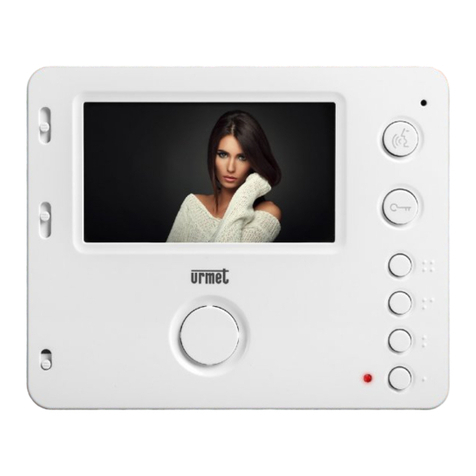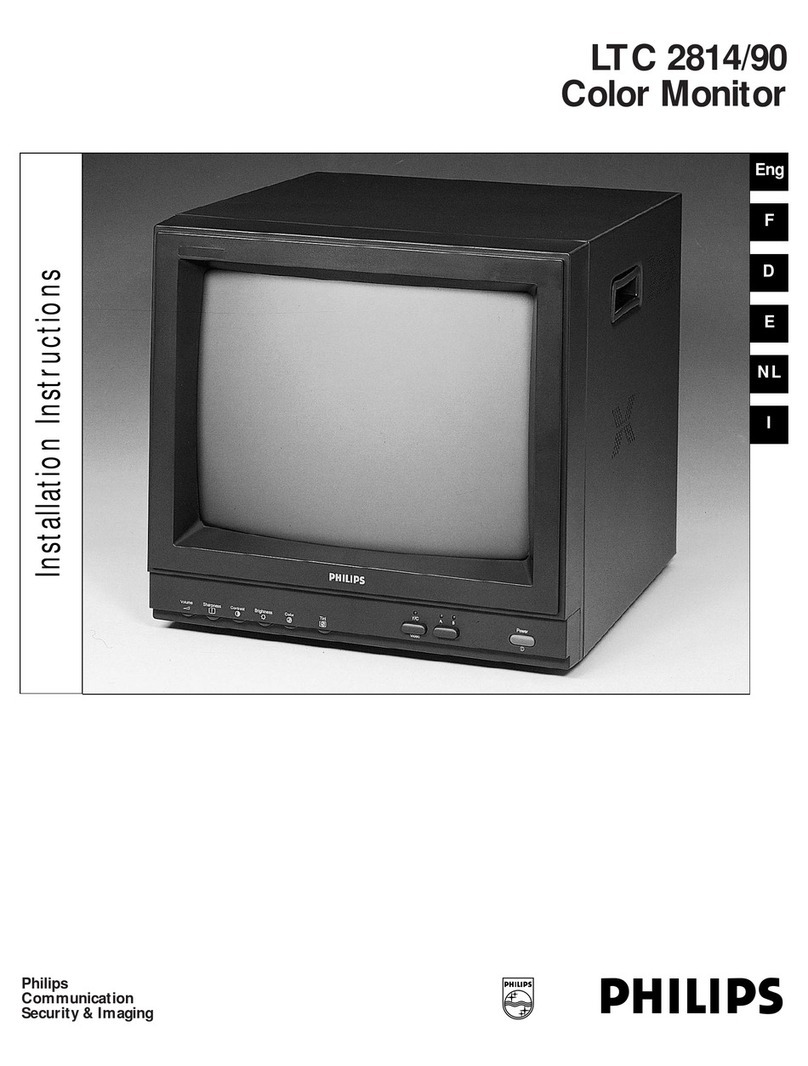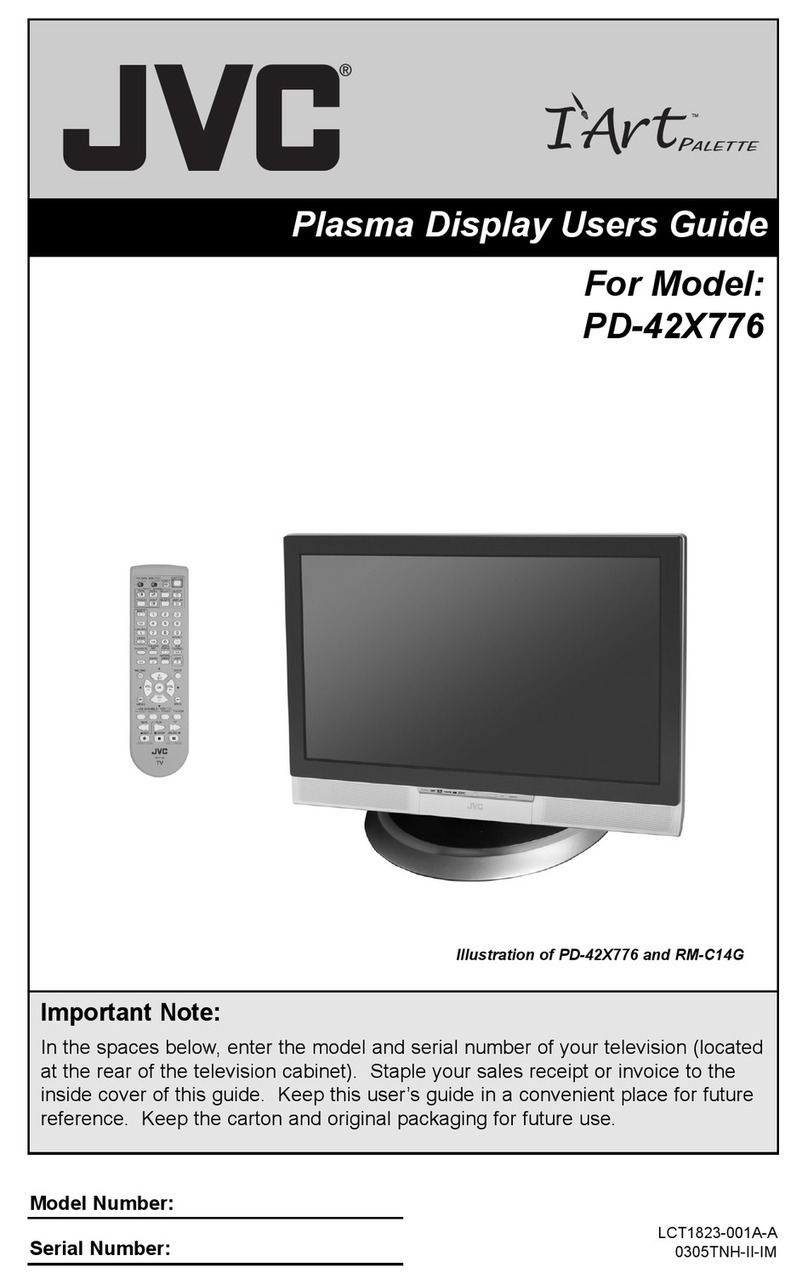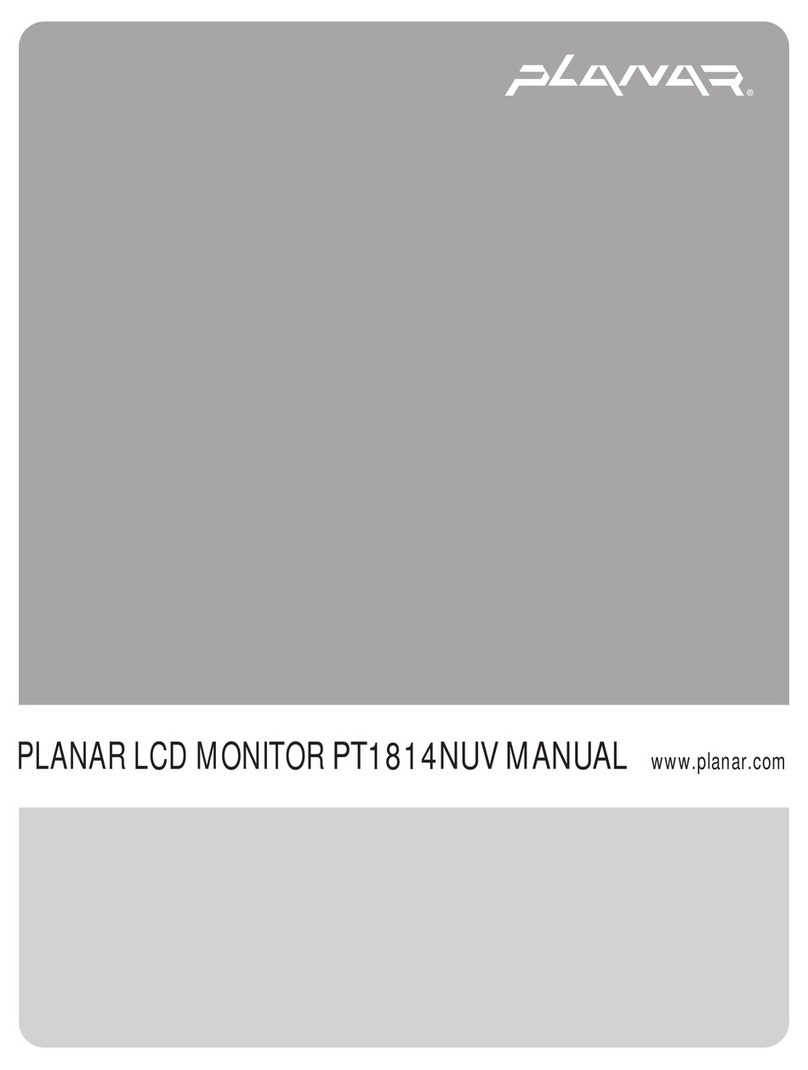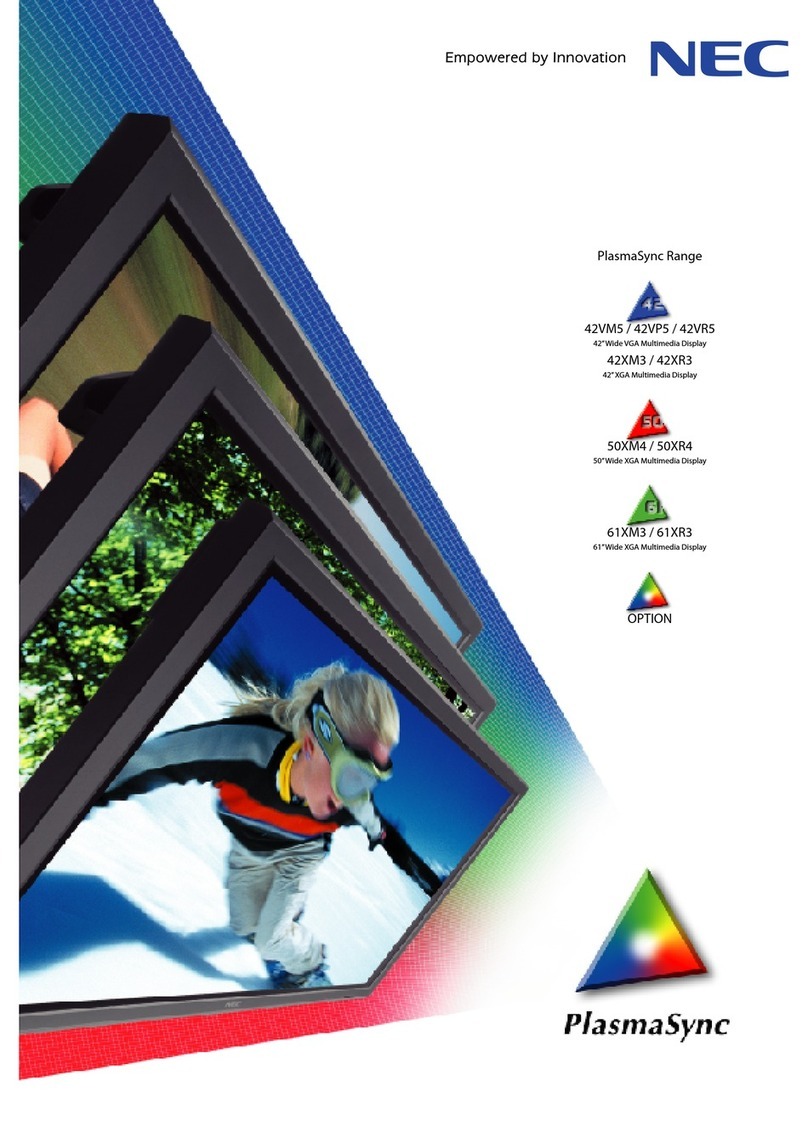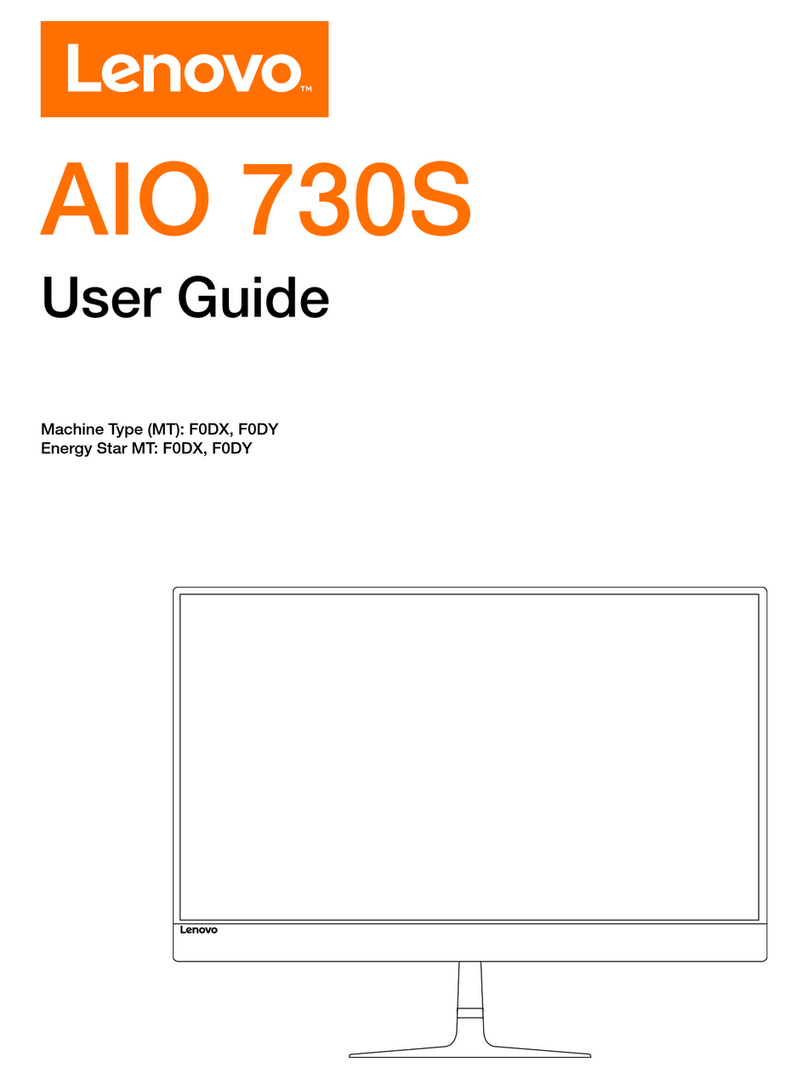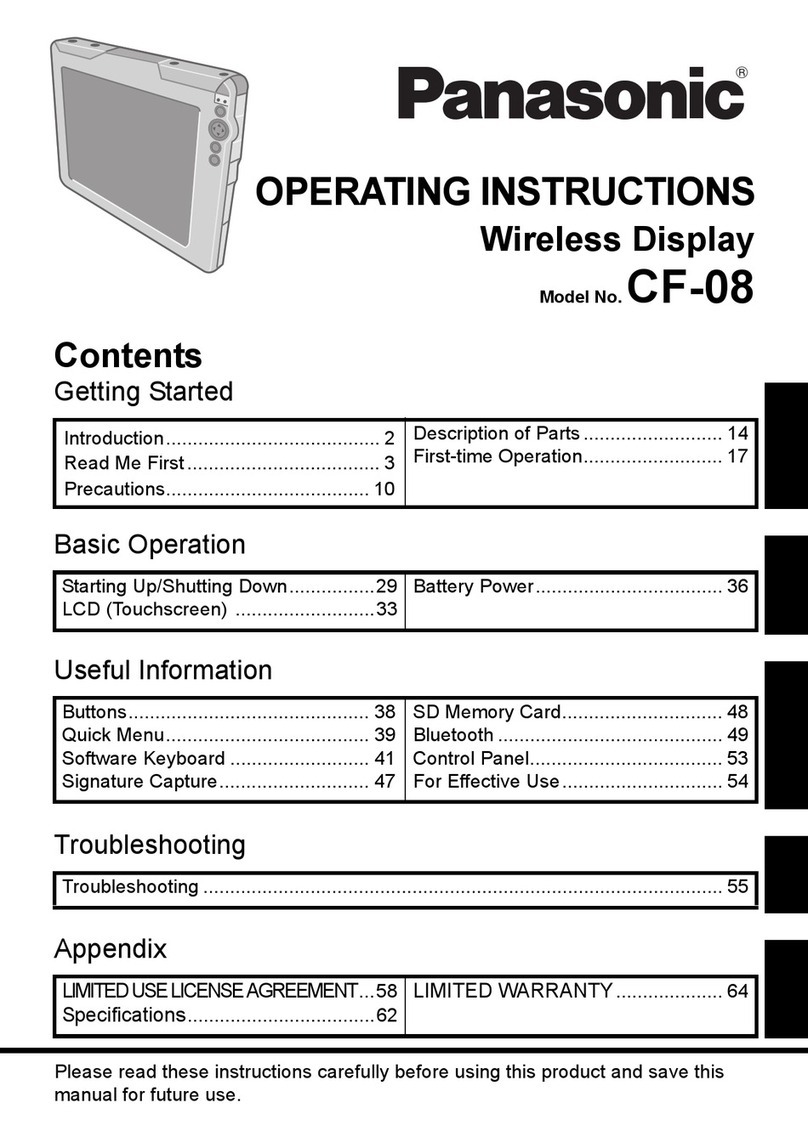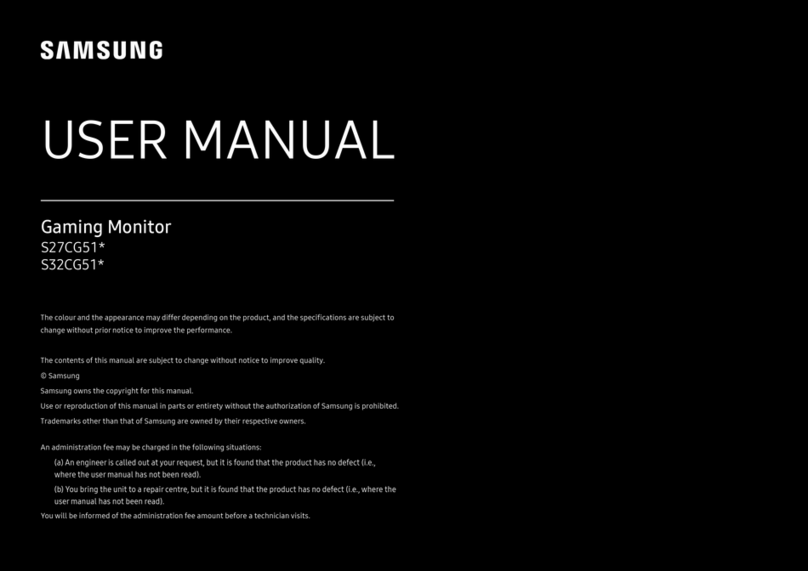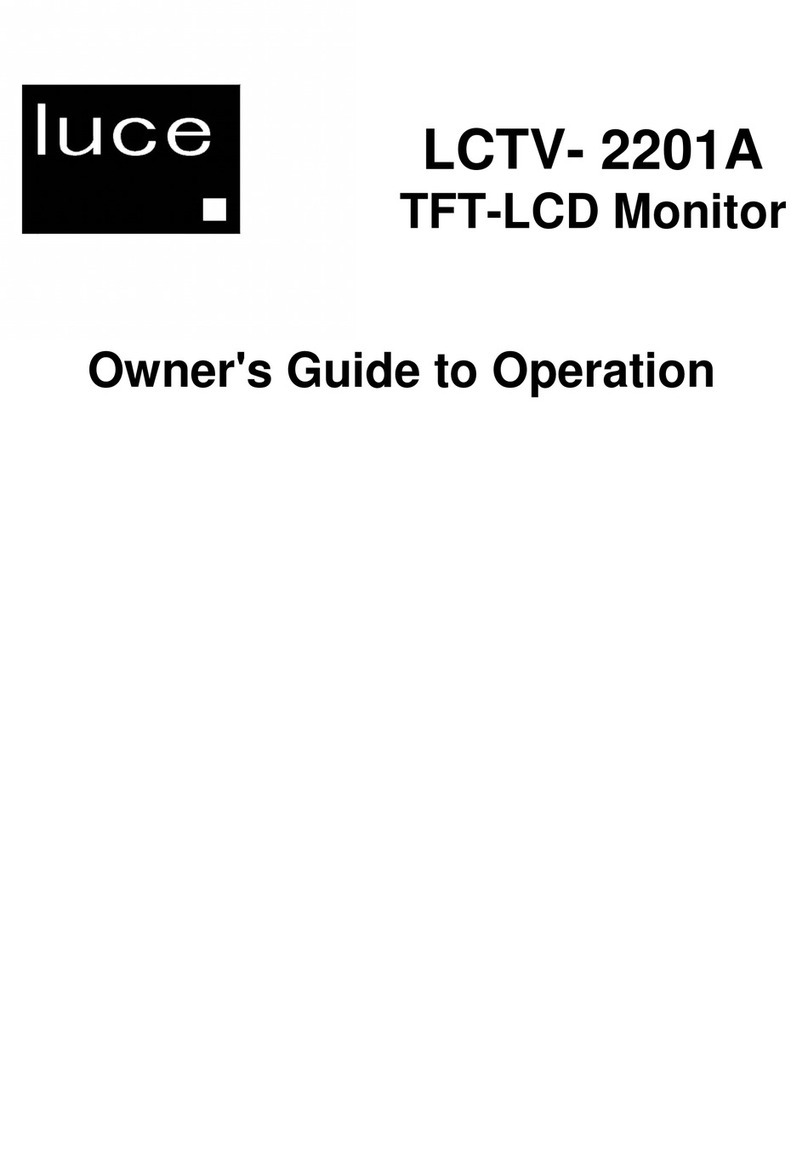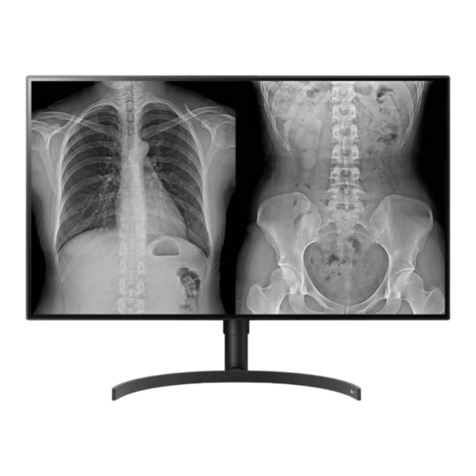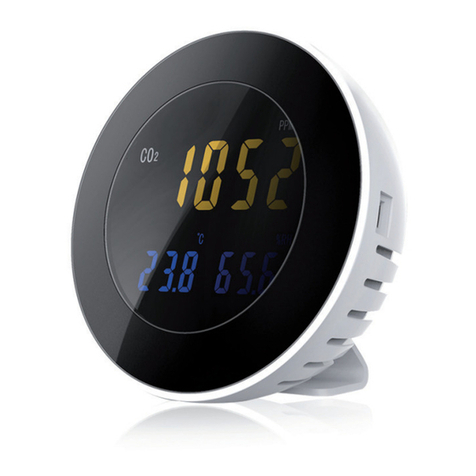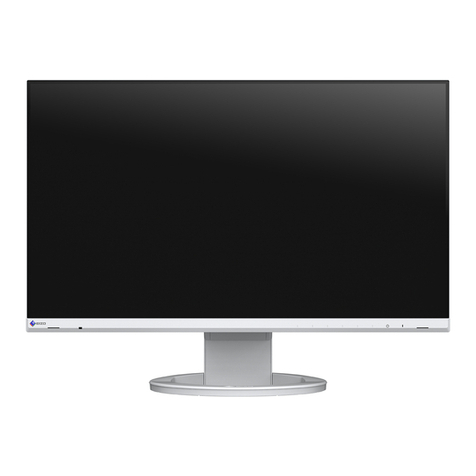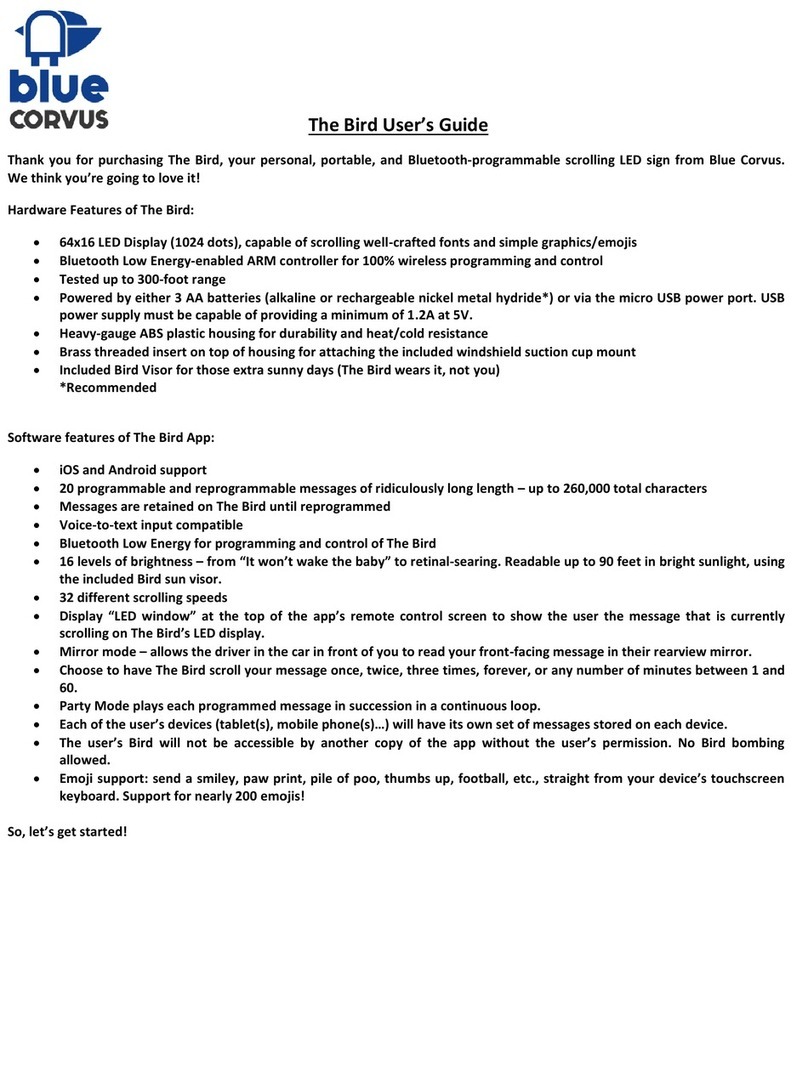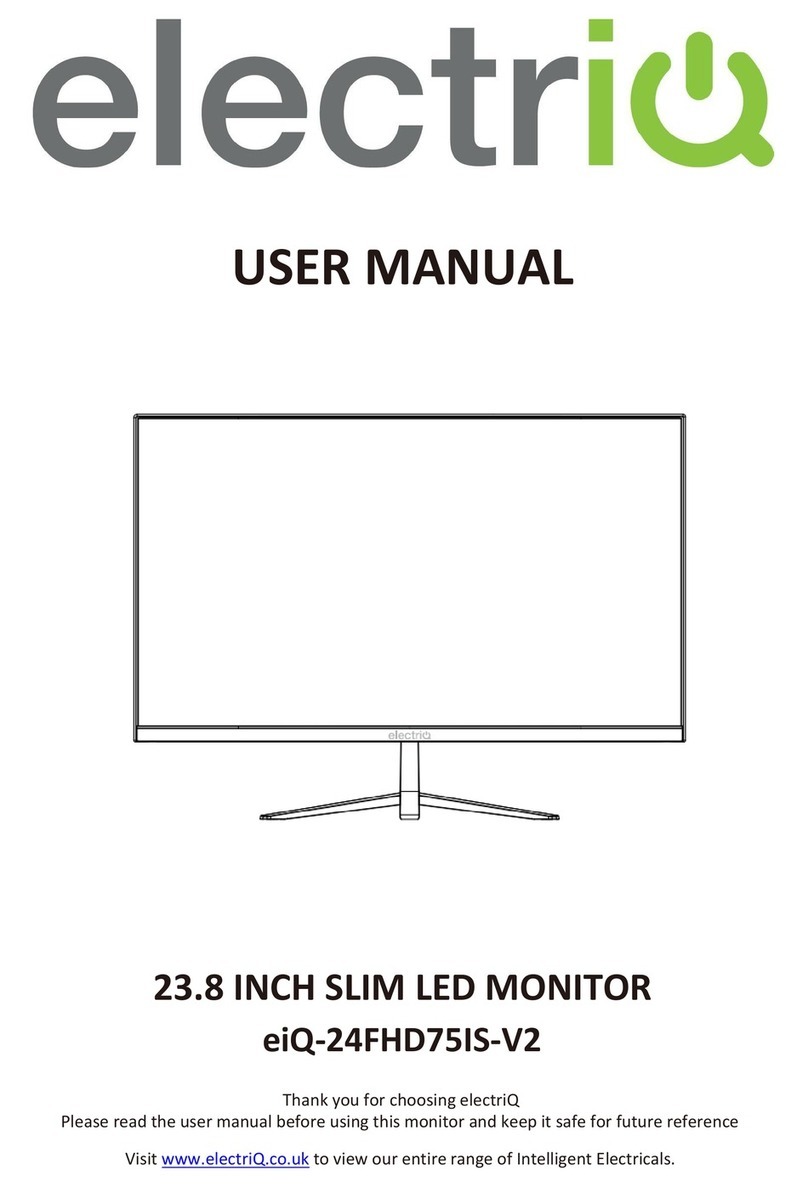Tracer NORM Monitor IS User manual

1 MN1007-C
MN1007-P3 10/01/13

2 MN1007-C
Contents
1Introduction and Scope ......................................................................................................................................6
1.1Introduction ................................................................................................................................................6
1.2Scope.........................................................................................................................................................6
2Naturally Occurring Radioactivity – an overview ................................................................................................6
2.1Introduction ................................................................................................................................................6
2.2Radioactivity in Oil and Gas Installations....................................................................................................7
3Operational Options ...........................................................................................................................................8
3.1Probe Selection..........................................................................................................................................8
3.1.1Geiger Müller End Window (Pancake) Probe .....................................................................................8
3.1.2Scintillation Probe.............................................................................................................................11
3.2NORM assessment criteria ......................................................................................................................13
3.2.1Assessment using cps measurement ...............................................................................................13
3.2.2Assessment using surface activity (Bq/cm2) .....................................................................................13
3.2.3Dose rate..........................................................................................................................................14
3.2.4Specific activity.................................................................................................................................14
3.3Background Measurement .......................................................................................................................15
4Tracerco NORM Monitor-IS – Functional description .......................................................................................16
4.1Handset monitor control keys...................................................................................................................16
4.2Operating the instrument..........................................................................................................................20
4.2.1Connecting the probes .....................................................................................................................20
4.2.2Removing the probe .........................................................................................................................20
4.2.3Switching on the instrument .............................................................................................................21
4.2.4Start-up sequence illustration ...........................................................................................................21
4.3Measurement Modes for the Scintillator Probe.........................................................................................22
4.3.1cps Mode..........................................................................................................................................22
4.3.2cps Minus Background Mode ...........................................................................................................23
4.3.3Dose Rate Mode ..............................................................................................................................23
4.4Modes of Operation for the Geiger Müller Probe......................................................................................24
4.4.1cps Mode..........................................................................................................................................24
4.4.2cps Minus Background Mode ...........................................................................................................25
4.4.3Becquerels per cm squared mode (Bq/cm2)......................................................................................25
4.5Integration Function .................................................................................................................................27
4.5.1Example – Making an integrated count measurement in cps mode..................................................27
4.6Alarm activation in integration mode ........................................................................................................28
4.7Background Measurement .......................................................................................................................29
4.8Alarm Configuration .................................................................................................................................30

3 MN1007-C
4.8.1Switching the alarm ON/OFF............................................................................................................30
4.8.2Selecting the alarm type ...................................................................................................................31
Setting Alarm Parameters ................................................................................................................................32
4.8.1Alarm options for each measurement mode .....................................................................................33
4.8.2Alarm notification..............................................................................................................................33
5Adjusting the integration period........................................................................................................................34
6Locking the keypad ..........................................................................................................................................36
7Using the Instrument – taking a NORM measurement .....................................................................................37
8Faults /Troubleshooting....................................................................................................................................39
9Display ranges – reading the screen................................................................................................................40
10Maintenance and Calibration ...........................................................................................................................41
10.1Cleaning...................................................................................................................................................41
10.2Handling...................................................................................................................................................41
10.3Calibration................................................................................................................................................41
10.4Equipment Inspection...............................................................................................................................42
10.5Repair ......................................................................................................................................................42
11Essential Safety Information For Hazardous Areas..........................................................................................43
12Contact Us .......................................................................................................................................................44
13Technical Specification ....................................................................................................................................46
13.1Radiological Type Tests ...........................................................................................................................46
13.2EMC Compliance Tests............................................................................................................................46
13.3Battery power ...........................................................................................................................................46
13.4Mechanical...............................................................................................................................................46
13.5Environmental ..........................................................................................................................................47
13.6Radiological performance.........................................................................................................................47
13.6.1Scintillator Probe ..............................................................................................................................47
13.6.2Geiger Müller Probe .........................................................................................................................47
13.7Hazardous area approval .........................................................................................................................48
14.Appendix 1 – Decay Series for Uranium and Thorium .....................................................................................49
14Appendix 2. - Menu diagrams ..........................................................................................................................52
14.1Scintillator probe Menu.............................................................................................................................52
14.2Geiger Probe Menu..................................................................................................................................53
14.3Alarm Menu..............................................................................................................................................54
15Document Revision History..............................................................................................................................55

4 MN1007-C
Illustrations
Figure 1 - Geiger Müller (Pancake) Probe ................................................................................................................ 9
Figure 2 - Scintillation probe ................................................................................................................................... 11
Figure 3 - Tracerco NORM Monitor–IS – key definitions......................................................................................... 16
Figure 4 - Start-up sequence .................................................................................................................................. 21
Figure 5 - cps readout screen ................................................................................................................................. 22
Figure 6 - Background subtracted CPS screen....................................................................................................... 23
Figure 7 - Dose Rate screen with SI units............................................................................................................... 23
Figure 8 - Dose rate screen with US units............................................................................................................... 24
Figure 9 - cps readout screen ................................................................................................................................. 24
Figure 10 - Background subtracted CPS screen..................................................................................................... 25
Figure 11 - Radionuclide selection in Bq/cm2mode................................................................................................ 26
Figure 12 - Bq/cm2mode – Reading screen with Lead-210 (wet) selected ............................................................. 26
Figure 13 - cps integration screen........................................................................................................................... 27
Figure 14 - Integration termination .......................................................................................................................... 27
Figure 15 - Alarm operation with Integration mode ................................................................................................. 28
Figure 16 - Background measurement.................................................................................................................... 29
Figure 17 - Alarm ON/OFF selection....................................................................................................................... 30
Figure 18 - LEVEL / FACt selection ........................................................................................................................ 31
Figure 19 - Integration period configuration ............................................................................................................ 34
Figure 20 - Keypad lock.......................................................................................................................................... 36
Figure 21 - Quick start guide to measurement ........................................................................................................ 37
Figure 22 - Display ranges...................................................................................................................................... 40
Figure 23 - U-238 Decay chain ............................................................................................................................... 49
Figure 24 - U235 Decay Chain................................................................................................................................ 50
Figure 25 - Thorium-232 Decay Chain.................................................................................................................... 51
Figure 26 - Complete scintillator probe menu ......................................................................................................... 52
Figure 27 - Complete Geiger probe menu............................................................................................................... 53
Figure 28 - Complete alarm menu .......................................................................................................................... 54
Tables
Table 1 - Glossary .................................................................................................................................................... 5
Table 2 – Measurement options for probes............................................................................................................... 8
Table 3 – Alarm options when using cps for NORM assessment............................................................................ 13
Table 4 – Alarm options when using Bq/cm2for NORM assessment...................................................................... 14
Table 5 – Alarm options when using dose rate for NORM assessment .................................................................. 14
Table 6 – Complete set of alarm options................................................................................................................. 33
Table 7 - Alarm indications ..................................................................................................................................... 33
Table 8 – Troubleshooting ...................................................................................................................................... 39
Table 9 - Radiological type test............................................................................................................................... 46
Table 10 - EMC compliance.................................................................................................................................... 46
Table 11 - Battery power......................................................................................................................................... 46
Table 12 - Mechanical data..................................................................................................................................... 46
Table 13 - Environmental specification ................................................................................................................... 47
Table 14 - Scintillator probe specification................................................................................................................ 47
Table 15 - Geiger probe specification ..................................................................................................................... 47
Table 16 - Hazardous area approval....................................................................................................................... 48

5 MN1007-C
Glossary
ATEX European Directive 94/9/EC applicable to equipment used in hazardous environments.
From French “Appareils destinés à être utilisés en ATmosphères Explosives”
Alpha radiation Radioactive decay resulting in the emission of a helium nucleus (e.g. Ra-226 Rn-222)
Background radiation The ionising radiation constantly present in the natural environment of the Earth, emitted
by natural and artificial sources
Baseefa A notified bod
y
for ATEX approval
Beta radiation Radioactive decay resulting in emission of an electron or positron (e.g. Pb-210 Bi210)
Bq/cm
2
A measure of surface activity. One Becquerel is equivalent to one disintegration per
second.
cpm Radiation activity measured in counts per minute
cps Radiation activity measured in counts per second
CSA North American product approval body
EMC Electromagnetic Compatibility
Gamma radiation Radioactive decay in which a high energy photon occurs along with the decay particle(s)
(e.g. 47KeV γPb-210 Bi-210)
IP rating Level of Ingress Protection against objects and liquid
IS Intrinsically Safe. Design concept, formally assessed and certified by a notified body,
which demonstrates that the instrument can be used safely in hazardous environments.
Isotope Member of an element group with the same number of protons but differing number of
neutrons in its nucleus.
LSA Low Specific Activity
NaI Sodium Iodide – scintillation crystal
NORM Naturally Occurring Radioactive Material
Nuclide A member of the set of approx. 3100 elements and their isotopes
RPA Radiation Protection
A
dvisor. A qualified expert who advises on safe and compliant use
of Ionising radiations according to the Ionising Radiations Regulations 1999 (IRR99)
RPS Radiation Protection Supervisor. An individual appointed to ensure compliance with local
rules and radiation regulations under IRR99
RSO Radiation Safety Officer
Scintillator Material which produces photons in response to incident radiation
µSv/h Micro-sieverts per hour. SI units for effective dose rate
µR/h Micro-roentgen per hour. Non-SI units for dose rate used in USA
Table 1 - Glossary

6 MN1007-C
1 Introduction and Scope
1.1 Introduction
The Tracerco NORM Monitor-IS is an intrinsically safe portable contamination monitor which has been developed
specifically to meet the requirements of the Oil and Gas Industry; particularly the measurement of Naturally
Occurring Radioactive Material (NORM).
Its principal function is to detect and quantify naturally occurring radioactive isotopes under a wide range of
operational conditions.
The monitor kit provides a single instrument platform with dual probe option to deliver optimum measurement
capability under the most demanding circumstances.
Although specifically designed to overcome the technical and practical challenges of measuring NORM in the field,
the monitor is also able to detect a wide range of man-made isotopes.
1.2 Scope
This manual provides detailed operational and technical information for the Tracerco NORM Monitor-IS.
In addition, an introductory guide is presented which explains the origins, radiological nature and the challenges
which arise when attempting to carry out practical measurements and radiological assessments of typical Naturally
Occurring Radioactive Material (NORM) deposits.
2 Naturally Occurring Radioactivity – an overview
2.1 Introduction
Radioactivity occurs naturally in the environment due to the presence of decay products from Uranium and
Thorium. These isotopes have extremely long half-lives. For example:
Uranium-235: 700 million years
Uranium-238: 4.5 billion years
Thorium-232: 14 billion years
The parent uranium and thorium isotopes decay to produce a series of other radioactive daughter isotopes of
widely differing half-lives. Eventually, through the course of time, these result in a stable isotope of Lead. A
schematic of the decay chains for each nuclide series is illustrated in Appendix 1 – Decay Series for Uranium and
Thorium
If the radioactive parent is undisturbed for a sufficiently long period of time, a condition of equilibrium is established
in which all radioactivity levels are equal. Removal of all or an amount of a nuclide from the decay scheme will
disturb this equilibrium and reduce the concentration of corresponding decay products. In a situation of true

7 MN1007-C
radioactive equilibrium, all nuclides will be present at the same level of radioactivity. The natural decay series are
complex and, in theory, up to 48 separate radionuclides may exist in scales which have been derived from a
mixture of the Uranium and Thorium decay products.
In reality the isotopes of uranium-235, uranium-238 and thorium are rarely detected in scales themselves. This is
thought to reflect the low solubility of such materials in the water within the reservoir. It is more usual to detect the
more soluble decay products of each series in the form of radium isotopes and their subsequent daughter products.
The result of these processes is that NORM contains many different radionuclides which emit a complex mix of
alpha, beta and gamma radiations. The relative amounts of radionuclides from the uranium and thorium decay
chains can also vary depending on the history of the reservoir and chemical composition; hence scales taken from
different locations often exhibit variations in radioactive composition.
Many of the isotopes in the various decay chains can be seen to have relatively short half-lives (minutes or hours)
and, if present in isolation, would very quickly decay and cease to generate any further radiological hazards. These
isotopes would technically be described as "unsupported" but in many cases they continue to remain present with
an unchanging level of radioactivity. This occurs because they are continuously being produced by other
radioisotopes in the decay chain such that there is a constant balance between production and decay leading to a
constant level of radioactivity; irrespective of the actual half-life. In this situation the decay scheme would be
considered to be in equilibrium and the shorter lived nuclide fully “supported” by its parent nuclide.
2.2 Radioactivity in Oil and Gas Installations
Radioactive materials from natural sources may arise in a number of forms within the oil and gas industry. A
common form of the material is known as Low Specific Activity or Naturally Occurring Radioactive Material
(LSA/NORM) scale. It frequently arises within oil and gas installations due to a process of selective chemical
deposition. Radioactive isotopes, together with a wide variety of other chemicals, may be leached from reservoir
rock and become dissolved within the reservoir formation water.
In oil and gas installations, where water injection of seawater is used to promote the recovery of oil, the presence of
sulphate-rich injection waters can give rise to the deposition of barium and strontium sulphate scales. These scales
may incorporate radioactive isotopes derived from the presence of uranium and thorium in the formation rock and
can produce significant scaling of pipework and vessels; thereby reducing the flow of liquids and affecting the
efficiency of control systems.
The laydown of radioactive scale can lead to significant external radiation levels on the outside of production
equipment. This raises the possibility of exposure to personnel from contamination by ingestion of radioactive
material when equipment is handled or cleaned during scale removal operations. Similarly, scale and silt may be
deposited in the equipment of onshore terminals where crude oil is delivered from offshore installations via marine
pipelines.
An additional problem may arise in gas production and associated handling systems from the presence of radon
gas generated by radium isotopes; both in formation rock or water and in LSA/NORM scales. This radioactive gas
can contaminate the production gas to significant levels and will decay to particulate-forming radioisotopes such as
lead-210 and polonium-210 which can also be deposited in equipment of the gas production system.
These deposits can be radiologically significant and pose potential hazards to health when equipment is opened
up. It is not uncommon for significant quantities of unsupported lead-210 or polonium-210 to be transported from a
reservoir in the gaseous phase. In such circumstances the availability of these radionuclides reflects their chemical
and physical properties and the historical levels of the radioactivity which over time have built up in the reservoir.

8 MN1007-C
3 Operational Options
The Tracerco NORM Monitor-IS has been designed to provide a versatile instrument which will enable the
operator to confidently detect and quantify contamination arising from NORM under most environmental conditions.
In order to achieve this versatility, the instrument is provided as a single data processing unit with the choice of two
types of radiation detection probes.
To realise the full capability of the instrument, it is important that the operator understands the technical
advantages of each probe and the circumstances under which they should be deployed.
3.1 Probe Selection
Although, in general terms, both the Geiger Müller (GM) and Scintillator-based probes will detect the presence of
NORM under most environmental conditions, there can be significant variations in detection sensitivity for different
scale types.
The following table provides guidance on the selection of probe for a particular NORM measurement application.
The table has been compiled on the basis that environmental background radiation is comparable to that found in
an offshore facility and there are no local abnormal circumstances – for example, the presence of local scale
storage containers will affect the detection capability of the scintillation probe due to a higher background radiation
reading.
This guidance is based on monitoring experience and the known technical characteristics of each probe. The
operator should always observe local operating procedures and, where appropriate, seek confirmation from the
appointed RPS or RPA.
Table 2 – Measurement options for probes
Type of measurement Suggested probe
Technology Tracerco part
ref.
Radium scale with readily accessible dry surface Geiger Müller SA-49
Radium scale with significant water, oil or sludge deposition Scintillator SA-50
Radium scale contaminated tubulars < 4” diameter (100mm) Scintillator SA-50
Radium scale deposition using external pipe surface survey
measurements
Scintillator SA-50
Lead-210 scale with readily accessible surface ( wet or dry) Geiger Müller SA-49
3.1.1 Geiger Müller End Window (Pancake) Probe
The Geiger Müller probe utilises a thin window detector which, although capable of detecting gamma radiation, is
particularly sensitive to the surface measurement of alpha and beta radiation.
The Geiger Müller probe’s high sensitivity to alpha and beta is ideally suited to the measurement of lead-210 and
polonium-210 which are commonly found in gas producing facilities where NORM is transported in the form of the
gas radon-222.

9 MN1007-C
Measurements may be taken in units of counts per second (cps) or - in the case where specific nuclides have been
selected - Becquerels per square cm (Bq/cm2).
The Bq/cm2measurement function is used to quantify the levels of surface activity of a particular nuclide. It is
important that the users have prior knowledge of the type of nuclides present in the deposition so that the
measurements can be set up and interpreted correctly.
Contact radiation.monitors@tracerco.com for further details regarding radionuclide spectrum analysis of
sample materials.
Figure 1 - Geiger Müller (Pancake) Probe
The detection sensitivity of the probe for alpha and beta emissions from scale materials may be significantly
reduced if the surface is wet or obscured by oily deposits.
Although in such circumstances the probe will continue to respond to any gamma ray emissions with only a limited
reduction in sensitivity, the reduced contribution from the alpha and beta particle detection will result in a significant
overall loss in sensitivity relative to a dry surface.
The Geiger probe has been calibrated with a number of response factors to allow measurement of Bq/cm2for
specific nuclides. The nuclide options which are provided includes Radium-226 in the form of wet or dry scales and
Lead-210, again in the form of wet or dry scales. The operator is able to select the required nuclide through the
instrument’s configuration menu [See section 0]

10 MN1007-C
The provision of a wet and dry option reflects the absorption of alpha and, to a lesser extent, beta radiation by
water and oil on the surface of the scale.
The response factors have been factory set under calibration conditions where the probe is placed directly
above the scale surface at a distance of 2mm.

11 MN1007-C
3.1.2 Scintillation Probe
The scintillation probe utilises an inorganic scintillator crystal which is very sensitive to the detection of gamma
radiation. It may also detect the higher energy beta radiation emitted by certain nuclides in the natural activity
decay chain.
A focus on gamma radiation detection sensitivity makes the scintillation probe ideal for measuring radium nuclides
and the associated decay chains. The probe has been designed to provide optimum radiation collection efficiency
without significantly reducing the ruggedness of the probe.
The nature of the design provides for near 360 degree collection of radiation thus providing an extremely effective
monitor for pipe internals.
Figure 2 - Scintillation probe
High gamma radiation sensitivity is particularly suited to detecting NORM through pipe or vessel walls where
internal monitoring is not possible and access limited to the external surfaces. In these situations the probe can be
used in an end-on configuration to directly monitor against the surface of interest.
The potential problems associated with the Geiger Müller probe - where wet or oily surface contamination of scale
limits detection of alpha and beta radiation - are largely overcome by the use of the scintillation based probe:
gamma ray emissions from scale are relatively unaffected by the presence of small quantities of oil and water.
An exception to the above is where areas of known Pb-210 deposition exist. In this case the GM probe will be
more effective.

12 MN1007-C
The Scintillation Probe can measure in units of cps or dose rate. The dose rate response is calibrated against a
nationally traceable caesium-137 source.
The Scintillation Probe dose rate output is designed specifically for the methods of NORM screening required
by North American regulators. General dose rate surveys using the probe are not recommended.
The response of all scintillation detectors vary with radiation energy and the gamma ray energies associated with
caesium-137 are significantly different to those arising from NORM.
[See calibration details in Section 10.3]

13 MN1007-C
3.2 NORM assessment criteria
There are various measures of the radiological significance of NORM. The assessment criteria favoured by local
regulators regarding NORM limits can vary from region to region.
The NORM Monitor-IS is designed so that it will accommodate all current assessment criteria.
For each assessment criteria the NORM Monitor-IS provides user-configurable alarms which can be set to reflect
the local rule PASS/FAIL criteria.
[See section 4.8 for alarm setting options]
The range of known assessment criteria is described in the following section.
The operator should always seek guidance from the designated RPA, RSO or RPS when selecting an
instrument for measuring NORM and observe local procedures in relation to any planned radiation monitoring
operations.
3.2.1 Assessment using cps measurement
The NORM Monitor-IS may be operated in cps or cps minus background mode, with either the GM Probe or the
Scintillator Probe.
The PASS/FAIL alarm criteria are summarised in the following table. These assessment methods are commonly
used in the UK and Middle East oil and gas sectors.
Table 3 – Alarm options when using cps for NORM assessment
3.2.2 Assessment using surface activity (Bq/cm2)
Surface activity measured in Bq/cm2is less commonly used in NORM assessment but may offer the operator
useful information - provided the type of nuclide is known.
[See also Section 3.1 Probe Selection]
Operating mode Alarm type Description
Cps Level Alarm activated when total cps exceeds user-configured level
cps - background Level Alarm activated when cps above background radiation exceeds user-
configured level
cps - back
g
round Factor Alarm activated when a multiple of back
g
round radiation is exceeded.

14 MN1007-C
The NORM Monitor-IS Geiger Müller probe is calibrated with response factors for lead-210 and radium-226.
Selection of the appropriate nuclide for the particular NORM samples allows the user to set PASS/FAIL criteria is
summarised as follows.
Table 4 – Alarm options when using Bq/cm2for NORM assessment
3.2.3 Dose rate
Legislative requirements, typically in the US, require operators to assess NORM on the basis of the direct radiation
dose rate which would be experienced by a worker at the nearest “accessible” location to the contaminated item.
This requirement is satisfied with the Scintillation Probe which can take measurements in units of µSv/h or µR/h.
The NORM Monitor IS dose rate output is calibrated by Tracerco against a traceable Cs-137 source.
[See Section 10.3]
Table 5 – Alarm options when using dose rate for NORM assessment
3.2.4 Specific activity
Specific activity in Bq/g is used as the fundamental measure of NORM activity. This measurement is performed by
Tracerco in laboratory conditions using highly complex measurement instrumentation.
Contact radiation.monitors@tracerco.com for further details regarding radionuclide spectrum analysis of NORM
samples.
Operating mode Alarm type Description
Bq/cm
2
Level Alarm activated when Bq/cm
2
exceeds user-configured level
Operating mode Alarm type Description
Dose rate Level Alarm activated when total dose rate exceeds user-configured level
Dose rate minus
background
Level Alarm activated when dose rate above background dose rate
exceeds user-configured level
Dose rate minus
background
Factor Alarm activated when a multiple of background dose rate is exceeded.

15 MN1007-C
3.3 Background Measurement
An important aspect which the operator should consider when assessing the relative sensitivities of the two probes
is the background radiation level.
The Geiger Probe will only be significantly affected by very local sources of radiation and will typically display a
very low and predictable background count rate - whether deployed onshore or offshore. A normal background
count rate of less than 1 cps is typical.
The Scintillation Probe has a much greater environmental background count and can be significantly affected by
local geology. The lowest background values can be achieved in offshore or desert environments but can rise
substantially onshore depending on the precise nature of the locality. The statistical uncertainty in background must
therefore always be considered when determining the sensitivity of the probe to sample radiation in any given
situation.
[See Section 4.7 for details on measuring and saving background radiation levels]

16 MN1007-C
4 Tracerco NORM Monitor-IS – Functional description
4.1 Handset monitor control keys
Figure 3 - Tracerco NORM Monitor–IS – key definitions

17 MN1007-C
Analogue / Digital Screen
Digital readout displays radiation levels detected by the probe in user selectable units. The LEDs provide
operational status information.
Analogue dial representation provides an animated auto-ranging readout.
The meter may be configured to show counts (cps or cpm), dose rate (µSv/h or µR/h) or Bq/cm2.
Instrument on/off key
Push key to turn the monitor power on or off.
Speaker / Alarm key
Press to silence audible clicking during radiation measurements. Extended press for 3 seconds provides entry to
Alarm setting menu. [See Section 4.8]
The key is dual purpose and provides the means to decrease (-) the displayed value in the alarm or integration
configuration menus.
Rate/Int./Stop key
This key allows the operator to select a measurement mode which gives a more statistically accurate result than
that using the real-time rate method.
When the key is pressed, the instrument will take a measurement over a pre-configured period of time (for example

18 MN1007-C
15 seconds). The user is presented with a time-averaged result on the display which gradually finds a mean value
over the duration of the measurement
Colour-coded LEDs above the instrument’s display screen indicate the current status of this measurement process.
[See Section 4.5 for more details on the integration function]
Select/Backlight key
The dual function key is used to select options from the alarm and integrate menus as well as activate the display
backlight.
Following activation, the backlight will operate for 20 seconds before switching off.
Mode (+) key
The primary key function is to step through the various measurement modes of the instrument. Each key-press
moves to the next unit option available for the probe attached.
The dual function key is also used to increase the alarm and integrate period parameters (+) when these menu
options are selected. [See Sections 4.8 & 5 on alarm and integration period configuration]
Log Back-ground key
This key is used to record and store background radiation levels.
Following key-press, a one minute background count is initiated and the result stored in memory. The result is used
in measurement modes where background compensation is factored into the value output to the display.
This process overwrites any previous value of background which is stored in memory.

19 MN1007-C
To use any of the background adjusted modes of operation (including Bq/cm2), the user must take a background
reading for the chosen probe.
[See section 4.7 for further information on background measurement]
Probe Connection
Each probe is supplied with a flying lead terminated with an industrial specification IP68 (mated condition) coupling
connector [See Section 4.2.1 – Connecting the probe]
Note that the plug and socket are polarised. Please observe the red dot registration markings when connecting
the probes.
Indicator LEDs
Three LEDs indicate the current processing stage when using the integration measurement mode. The integration
measurement sequence is shown below.
1. Green rate LED – indicates that the measurement is in real-time. The display reading will fluctuate according to
the random nature of the radiation source.
2. Amber integrate LED – indicates that the instrument is busy. The LED will continue to flash over the duration
of the integration period.
During this period the display continues to show an averaged measurement with a one second refresh rate.
3. Red stop LED – indicates that the measurement is complete. The display no longer updates while the red LED
is flashing.
Press the Rate/Int./Stop key again and the instrument returns to rate mode (1). The sequence is now complete.
[See also Section 4.5 Integration Function]

20 MN1007-C
4.2 Operating the instrument
4.2.1 Connecting the probes
Each probe is supplied with a flexible (“curly”) cable terminated with a polarised industrial grade plug. Connection
to the hand-held monitor is made via a panel mount socket connection as shown below.
Rotate the probe plug so that the red marker is uppermost. Align the marker with the corresponding red dot
marker on the handset-mounted socket and push firmly.
A successful connection is confirmed by an audible and tactile ‘click’ of the latching mechanism.
Switch the monitor on and observe that the initialisation sequence is carried out – [See Section 4.2.3 – Switching
on the instrument]
4.2.2 Removing the probe
Switch the monitor off.
Hold the probe plug by the machined grip and pull firmly away from the handset.
Table of contents
